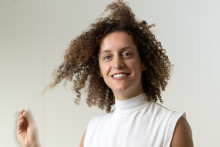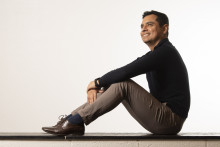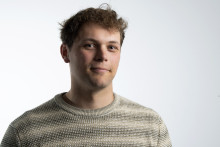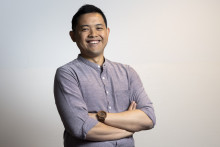Mira El Akkawi
PhD research topic: The application of local mechanical stimulation on 3D-(bio)printed constructs inside a granular gel supporting medium
Work: PhD candidate at the Design, Production and Management department & the Engineering Organ Support Technologies department, Faculty of Engineering Technology (ET) at the University of Twente
Education: Master’s degree in Chemical Physics, Science and Engineering, ENSCBP - Bordeaux INP (Graduate School of Chemistry, Biology and Physics), France
Originally from: Lebanon
Mira El Akkawi hopes that her PhD research will help (re)create living organs on demand, so to speak. ‘It would be very beneficial for patients in need of tissues and organs transplants if we could regenerate them instead of adding them to the transplantation list’, she says. Which is why her work focuses on a ‘missing piece’ of the tissue engineering puzzle: 3D bio-printing of vascular networks, in particular arteries and veins networks.
Being able to create vascularized networks inside the engineered tissue or organ is extremely important, explains the doctoral candidate. Without it, cells cannot survive. ‘At the moment, we are able to 3D bio-print tissues such as cartilage, skin and bones, tissues that don’t have complex blood vessel networks. But in order to create full organs, we need to ensure a constant supply of oxygen and nutrients to all cells through the complex vascular network’, says El Akkawi.

Magnetic stimulation
To make this a reality, El Akkawi is using magnetic stimulation. Her work focuses on 3D bioprinting of hydrogel embedded cells inside a granular bath, which ‘you can imagine as a sort of ball pit with tiny balls of microgel’, she describes.
'Using bioprinting, we could generate the tissue implant in real-time, during the surgical procedure'
‘These microgels are magnetic, which allows us to manipulate the cells from a distance after they are printed’, says the PhD researcher. ‘Although the technology is still young, my goal is to use magnetic forces to stimulate and manipulate cells and hopefully guide their differentiation into a specific type of cell lineage.’
Supporting cells in their development is a crucial part of tissue engineering. Bioprinting is generally done using stem cells, because of their ability to replicate indefinitely. However, stem cells need to differentiate into the right cell types, such as endothelial and smooth muscle cells in the case of an artery. Using magnetic microgels is a precise method to gain a better control over the process.
‘Using magnetic stimulation is already a popular method in tissue engineering, because it is an indirect method that doesn’t require physical interaction with the cells’, says El Akkawi. ‘The added value of my work is that it will be much faster, and it will allow us to control the shape of the 3D printed constructs. The idea is to produce a granular bath that contains both magnetic and non-magnetic microgels. Once printed, it will be freeze dried so that it can then be used whenever needed.’

Bioprinting during surgeries
With this approach, El Akkawi hopes that she’ll be able to develop a bioprinting method that surgeons in hospitals could easily use on location. ‘Imagine there is a patient getting a surgery and they urgently need a specific tissue or organ. Using bioprinting, we could generate the tissue implant in real-time, during the surgical procedure, instead of having to transplant it from someplace else’, she says.
'As a PhD, you already struggle with an imposter syndrome, and doing something completely new doesn’t help with that'
Being able to improve people’s lives was the reason why Mira El Akkawi decided to enter the field of bioprinting in the first place. ‘I studied chemistry and was always interested in the aerospace sector. I even worked in a startup and was developing composite materials for aerospace. But then COVID hit, and I suddenly realized that it was the biotech sector that was making a real difference in the world. I decided I wanted to move towards it and use my knowledge in material science to work on 3D bioprinting.’
Working in the uncharted waters of bioprinting, however, isn’t always easy, she adds. After all, it is not a field with a long history. ‘As a PhD, you already struggle with an imposter syndrome, and doing something completely new doesn’t help with that. On the other hand, once it works, it is extremely motivating and rewarding. I really enjoy working in a field where you do something nobody has done before. I like breaking boundaries.’








